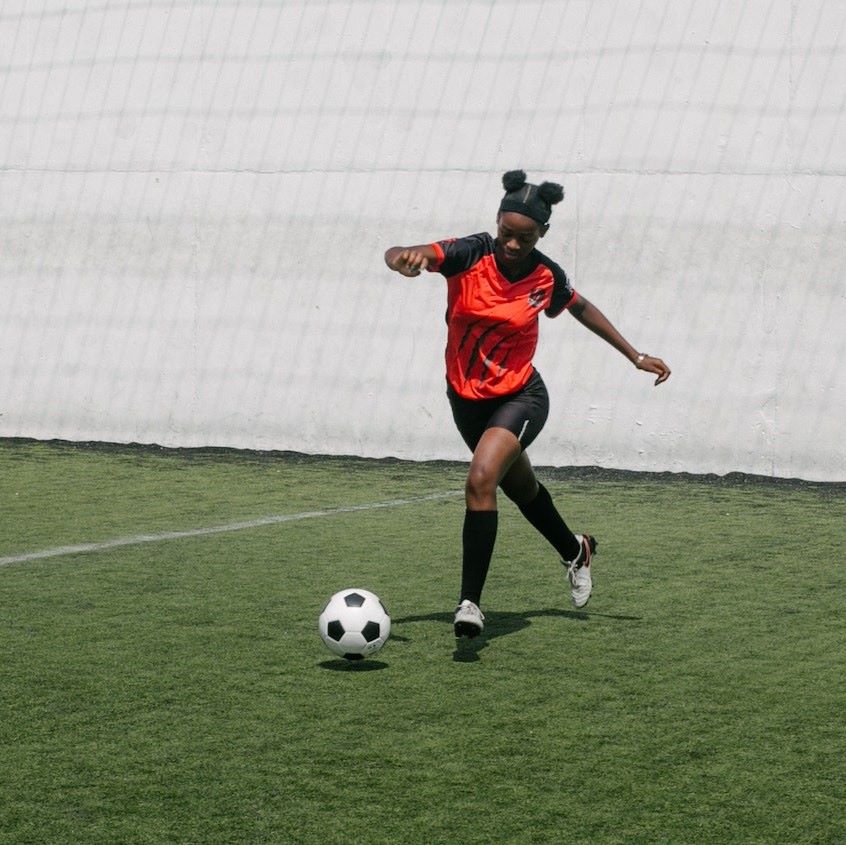by Nick Mabey.
Earlier this week it was International Women’s Day and so I thought I’d take a break from the protracted misery, stress and occasional hope of the men’s team’s relegation battle to focus on celebrating the progress of women’s football, locally and nationally. This year’s theme is #EmbraceEquity. As the IWD website puts it, equity isn’t just a nice-to-have, it’s a must-have and a focus on gender equity needs to be part of every society’s DNA.
No-one can argue that there is equity between the genders in football, but it’s clear the women’s game has made great strides recently and is in rude health right now. Just today, the government have announced a £600m package designed specifically to create equal school sport opportunities for girls. An open letter to UK Government from the England Lionesses defender, Lotte Wubben-Moy, provided a powerful contribution to a feeling that this is the time for women’s football, and sport in general, to push on toward more acceptance and equity.
Let’s not forget the Lionesses are England’s most successful national football team for several generations. Their success in winning the 2022 Euros last summer has been followed up with a tremendous winning streak and they can approach this year’s World Cup in Australia and New Zealand with great confidence, and as one of the favourites. Such is the competitive nature of women’s football globally now that they are only second favourites behind USA and as many as six or seven teams are fancied to win. And media wise now the Lionesses are box office A listers, ranking alongside their male counterparts in terms of popularity and recognition. The fact that winger Beth Mead won BBC sports personality of the year in 2022, based on a public vote, says it all. Women’s football has arrived in the mainstream, finally.
On a domestic level the Women’s Super League continues to flourish, with attendances averaging 6000 this season compared to less than half before. True these numbers are still much lower than the men’s Premier League, but they are growing. Arsenal v Spurs attracted over 47,000 spectators last autumn, a WSL record, and that number could well be topped as this season reaches it’s climax. Manchester’s United and City, together with Chelsea, are having a right old ding dong at the top of the table and Arsenal are not out of it either.
One division below in the Championship, Saints are still clinging on to third place. Sadly scoring seems to be the biggest challenge, much like the men, and promotion to the WSL seems unlikely, given only one team goes up. Nevertheless Marieanne Spacey-Cale’s side can be very proud of their first season at this level.
When I last wrote about the Saints women’s team in April last year they had just become champions of League One. I fully expected to go and watch them play this season, either at Totton or St. Marys. And yet I’m sad and a bit embarrassed to say I haven’t made it. It’s got me wondering why? It’s not cost or convenience, and it’s not lack of appreciation for the team. And it’s certainly not about the quality – I’ll stop and watch kids or pub football for as long as my partner or my dog will allow me on a Sunday morning walk. Possibly it’s not just my habit/ritual. I’ve been watching the men’s team with the same friend for well over forty years now; it just sort of happens without me thinking about it. Possibly I’m just not keen enough; a fair weather fan of the women’s game who would go if it was WSL or likely to be a big crowd, or even if the games were more often 5-4 than 1-0. Perhaps I’m just not the ‘target market’ a horrible corporate phrase that might have more relevance than I’m allowing? Or is it that supporting Saints is just hard work this season and I’m using up all my energy and support on the men?
Even without my support the Saint’s women, like their WSL counterparts, are attracting larger crowds than ever before. Their record was smashed this year, with 4,253 turning up for a match in January, and there has been a 65% increase in average attendance this season compared to last. More evidence that women’s football is flourishing, alongside many other sports, particularly rugby and cricket. It’s often said that sport reflects the society in which it takes part; let’s hope so as far as the health and growth of women’s sport is concerned.
- We rely on donations from readers to keep In Common running. Could you help to support In Common, for as little as 25p a week? Please help us to keep on sharing stories that matter with a monthly donation. Visit: https://www.patreon.com/incommonsoton

